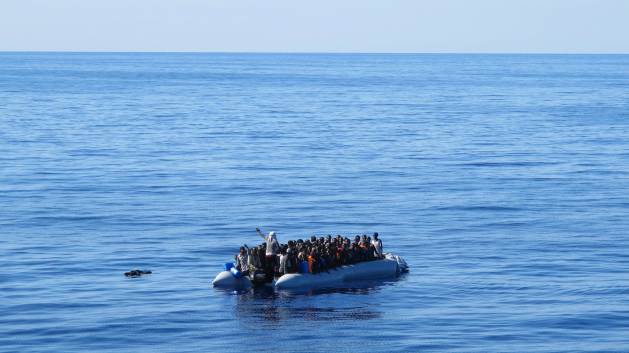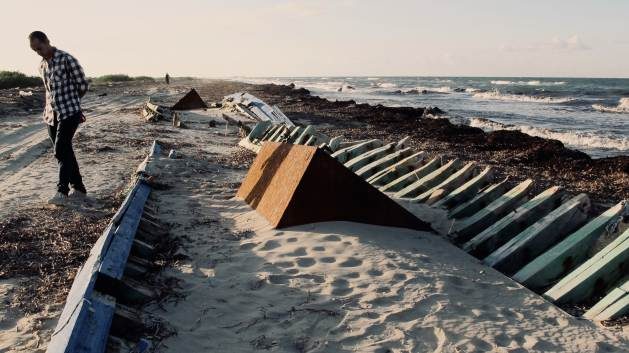ROME, Jun 19 (IPS) – A new catastrophe in the Mediterranean, this time off the coast of Greece. The number of drowned still to be determined — barely 100 survivors speak of more than 700 passengers on board— will be added to almost 30,000 lost at sea since 2014, according to the International Organization for Migrations.
Those are just the people that someone, family or friends, ever claimed. The actual figures are almost certainly much higher.
We read that the traffickers’ boat had left the coast of Libya bound for Italy. We rarely look deeper. Does anyone remember Libya other than as the port of departure after a new misfortune at sea?
Libya has always been a transit country from Africa to Europe. Today, however, we are talking about a scale of unfathomable magnitude, for a very simple reason. Libya has been in chaos for more than a decade, and by now the line dividing trafficking mafias, armed militias, and politicians has become almost invisible.
It might not have turned out this way. We all remember 2011, when a wave of protests against regimes entrenched for decades rocked the Middle East and North Africa. Once that unrest descended into conflict, Libya’s revolt became doubtless the most visible. The eight-month civil war monopolized TV channels and newspapers throughout the world.
The war seemed to end with the lynching of the country’s leader, Moammar Gaddafi, in October of that same year. Literally overnight, Libya disappeared from global attention, as focus shifted elsewhere. There was neither time nor international will to reflect on what had happened, and would come next.
It would prove a missed opportunity. Libya’s immediate future did not look bleak at the time. In 2012, after presidential elections in Tunisia and Egypt, Libya too elected a post-Ghaddafi democratic body, the first General Congress of the Nation, designed to replace the “umbrella” body opposition forces had created during the war, the National Transitional Council.
Elections brought hope to a society that had never been asked its opinion on anything. And at first, unlike what happened in neighboring countries, a self-dubbed “democratic” coalition of new political parties took hold, with political moderates prevailing over an emerging religious extremist wing.
But the euphoria only lasted until that summer. Sectarian attacks against Sufi Muslims took place, followed closely by the assassination of the US ambassador in Benghazi. Images of the burning American consulate anticipated the unraveling to come.

A new war broke out in 2014, but remained almost unreported and poorly understood outside Libya. The country split between two governments: one in Tripoli that had the backing of the UN, and another in Tobruk, in the east of the country, that had the backing of allies such as Egypt, Saudi Arabia or the United Arab Emirates. Both sides claimed to be the legitimate government of Libya.
In the fall of 2015, emails leaked to the UK Guardian revealed that Bernardino León, the United Nations envoy for Libya charged with mediating the conflict, had maintained close links with the UAE, which backed Tobruk’s side in the war. Neutrality was assumed from the UN negotiatorbut this was seemingly not the case.
After “Leongate” forced the UN envoy’s resignation in November 2015, León would move to Dubai, where he was appointed director of the UAE’s Diplomatic Academy. International press remained largely silent on the scandal, and a promised UN investigation never saw the light of the day. Far from contributing to a rapprochement between Libya’s two warring sides, the UN process had led to the war dragging on, and the two sides to entrench.
In 2019, after five years of neither side gaining the upper hand, the Tobruk side, led by strongman Khalifa Haftar — a general who had helped bring Gaddafi to power, and was then later recruited by the CIA— launched a brutal offensive at Tripoli, receiving air and logistics cover from the United Arab Emirates.
The attack on Tripoli was fast and indiscriminate. Civilian targets were bombarded, provoking officials in London and Berlin to initially protest Hafter’s move as “an attack by someone who had not been attacked”. European governments debated calling for Haftar to reign in the onslaught.
Once again, European politics would come into play in Libya. EU parliamentary elections—held in May 2019— filled the Brussels parliament with politicians who were less concerned with the lost to average Libyans, and shared French President Emmanuel Macron’s more hawkish vision.
The French leader’s US counterpart, Donald Trump, also called France and Russia directly and told them he wanted neither Egypt nor the UAE, Haftar’s backers, as enemies. Washington would go on to support Haftar in Tobruk, though the rival Tripoli government had the backing of the UN.
All this would occur in a nation with enormous potential for prosperity. Libya has the largest oil reserves in Africa, as well as reserves of underground water and promising mineral resources. It is very close to Europe geographically, boasting an enormous tourist potential and a network of ports that many governments would dream of.
With a population of barely six million, it would be easy for Libya to turn into a model of progress and well-being for the entire region. But the world’s decision-makers have other plans, it appears. In addition to the calls between Washington, Brussels and Moscow, governments in Ankara, Doha, Dubai, Cairo and Riyadh, among others, also know Libya’s strategic and financial value, and want their share. If they don’t get what they want there, each of them will make sure their rivals don’t either.
While global forces take the country’s fate out of Libyans’ own hands, thousands of Sudanese, Malians, Somalis, Nigeriens and others fleeing war and misery continue to pass through a mirage of a country. Those who survive the brutal desert journey fall in the hands of the deeply-rooted human trafficking networks, which operate unmolested amid Libya’s chaos.
The long-awaited stability in Libya is key for the region and its people, including those in the northern Mediterranean. But the world continues to look the other way. After this new catastrophe at sea, we will only remember that an entire country, and its people, from a single line, so familiar now: “The boat had departed from Libya.”
© Inter Press Service (2023) — All Rights ReservedOriginal source: Inter Press Service
Check out our Latest News and Follow us at Facebook
Original Source

